Exploring different types of fences for your residential property
By HeyHome • May 23, 2023
Key Takeaways
- Choosing the right fence for your residential property can be a significant decision, impacting not only your home's curb appeal but also its value and functionality.
- There are various types of fences to consider, each with unique benefits, considerations, and customization options.
- Factors such as privacy, security, aesthetics, maintenance, and budget must be taken into account when selecting the right fence for your property.

Choosing the right type of fence for your residential property is more than just a home improvement project; it's a reflection of your style and a statement of your needs, from privacy to security. But with a multitude of fence types available, from traditional wood fences and robust wrought iron to modern vinyl fencing and eco-friendly bamboo options, the choice can be overwhelming.
This guide will walk you through the different types of fences, helping you understand their unique characteristics, maintenance requirements, and costs per linear foot. Whether you're seeking a decorative fence to enhance your curb appeal, a privacy fence to define your property lines, or a garden fence to protect your other plants, this post has got you covered. It's about time to replace the question mark in your mind with the perfect fence that compliments your home, offers extra security, and suits your budget.
Remember, the fence you choose is not just about looks; it's also about the materials used, the installation process, and the amount of maintenance it will require. From low maintenance options to those that require a bit more care, we will explore all these aspects so you can make an informed decision about your new fence. So, let's dive in and explore the fascinating world of fences.
Join our newsletter
Stay on top of the latest in landscaping and lawn care with one valuable tip right in your inbox every Saturday morning.
Understanding your needs: selecting the right type of residential fencing

When it comes to selecting the right type of residential fencing, it's essential to understand your specific needs and priorities. The perfect fence for your property is not just about aesthetics; it's about finding a fence type that aligns with your lifestyle, privacy needs, security requirements, and budget constraints.
The factors to consider when choosing a fence

- Privacy and Security: One of the primary reasons homeowners install fences is to provide security and privacy. Privacy fences, which are typically around 6 to 8 feet tall, are designed to obstruct the view into your yard from the outside, offering a sense of seclusion. Wood, vinyl fencing, and composite fencing are popular materials for privacy fences due to their solid construction. On the other hand, if your primary concern is security, you might opt for wrought iron fences or chain link fences, which can deter trespassers and keep pets and children safe.
- Aesthetics and Curb Appeal: The right fence can greatly enhance the curb appeal of your property. Decorative fences, often made of wrought iron, vinyl, or natural wood, can complement the architectural style of your home and increase its value. For a rustic look, you might consider split rail fences or post and rail fences made from pressure treated pine or western red cedar.
- Maintenance: Maintenance is another important factor to consider when selecting a type of fence. Wood fences, while charming, require more upkeep compared to other materials. They may need to be painted or stained regularly to prevent decay. On the other hand, vinyl fences are virtually maintenance-free, requiring little more than an occasional rinse with a garden hose.
- Cost: Fencing costs can vary widely based on the materials used and the complexity of the fence design. Costs are often calculated per linear foot, including both the cost of materials and professional installation. For example, a chain link fence is typically less expensive than a wrought iron or wood fence.
- Regulations: Before making a decision, it's crucial to check with your local homeowners association (if applicable) and understand local zoning laws. These may dictate the height of your fence, the materials allowed, and how far your fence must be set back from the property line.
Once you've carefully considered these factors, you'll be better prepared to choose a fencing material and style that suits your needs, enhancing both the functionality and aesthetics of your property.
Exploring the traditional fence styles: a journey through time

Just as the styles of homes have changed over the centuries, so too have the styles of fences that accompany them. A fence is more than just a boundary line; it's a statement of style, a nod to history, and a practical tool for defining property lines and providing security.
Brief history of residential fences

The history of fences is as old as human civilization itself. Early fences were primarily functional, designed to keep livestock in or out, protect crops, or mark territory. As societies grew and advanced, so did the materials and styles of fencing.
Wood fences, for instance, have been a popular choice throughout history. They were, and still are, used for a variety of purposes, from rustic split rail fences used in rural settings to the classic picket fences that symbolize suburban domesticity. Wood is a natural material that can be easily shaped, making it versatile for different fence styles.
Wire fences, including barbed wire and hog wire, were introduced in the 19th century and rapidly became popular in rural areas, particularly for containing livestock. Chain link fences, a type of wire fencing, emerged in the 20th century as an affordable and durable option for urban and suburban properties.
How traditional fence styles have evolved and their influence on modern fencing options
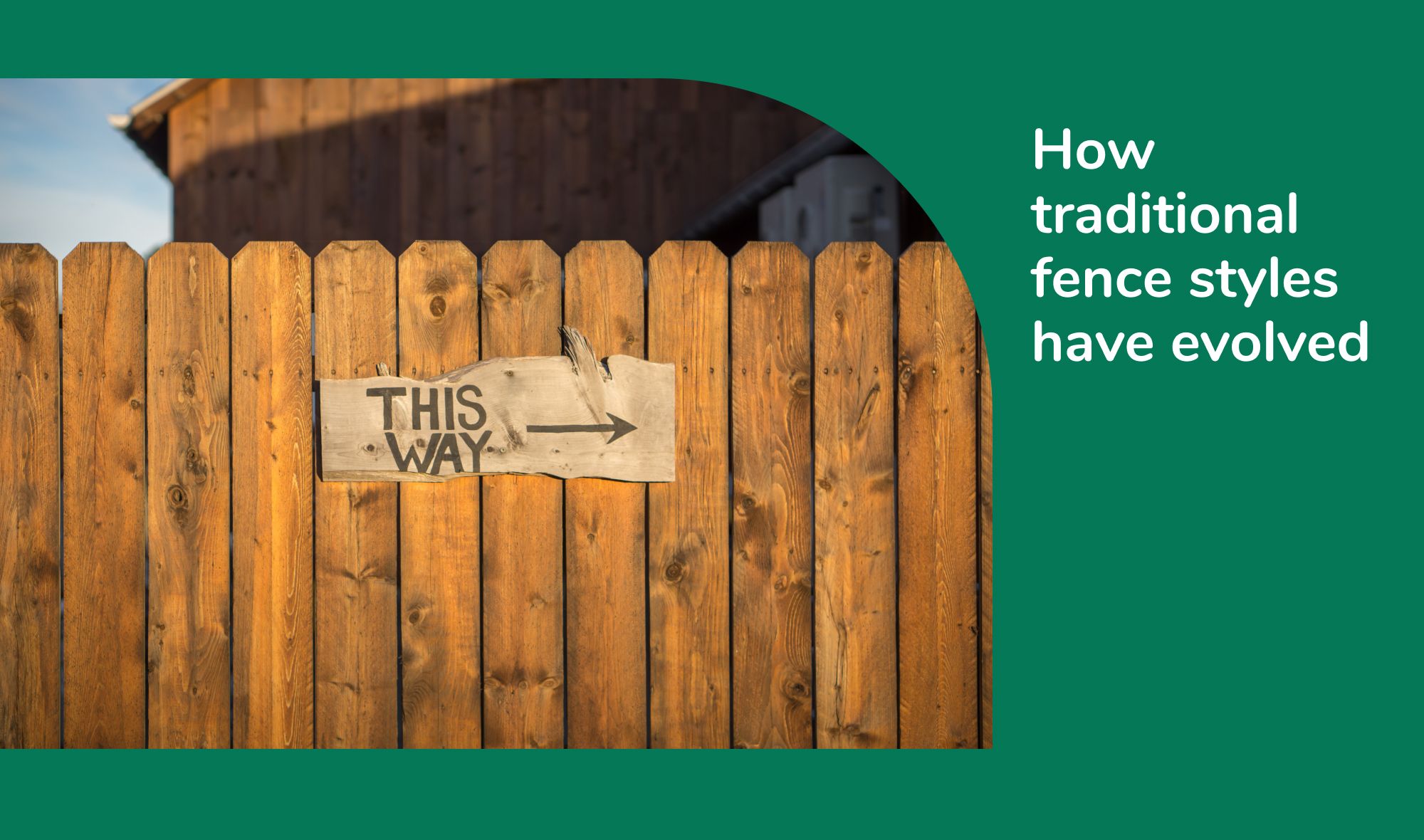
While wood and wire fences are still widely used today, new materials and styles have been introduced, expanding the options for homeowners.
Wrought iron, once only available to the wealthy due to its cost, became more accessible with the advent of mass production in the 19th century. Wrought iron fences are known for their ornamental designs and offer a classic and elegant look. They're particularly suitable for historic or high-end properties, and are still a popular choice today.
Vinyl fences, a more recent innovation, have become popular due to their low maintenance requirements and versatility. Available in a variety of colors and styles, including designs that mimic the look of natural wood or wrought iron, vinyl offers a modern twist on traditional fencing styles.
Composite fencing, which combines the best attributes of wood and vinyl, has also gained popularity. Composite fences offer the look and feel of wood without the maintenance, making them an appealing option for many homeowners.
From the rustic charm of wood fences to the sturdiness of wrought iron and the low maintenance appeal of vinyl and composite fencing, traditional fence styles have significantly influenced the variety of modern fencing options available today. As you explore the type of fence that's right for your home, understanding the roots and evolution of these styles can provide a deeper appreciation for the role and value they add to your property.
Styles of fences for homes: wood fences

When it comes to residential fencing, wood fences are a classic choice that offer a blend of natural beauty, versatility, and affordability. From enhancing your home's curb appeal to providing privacy and security, wood fences can cater to a multitude of needs.
The different types of wood fences
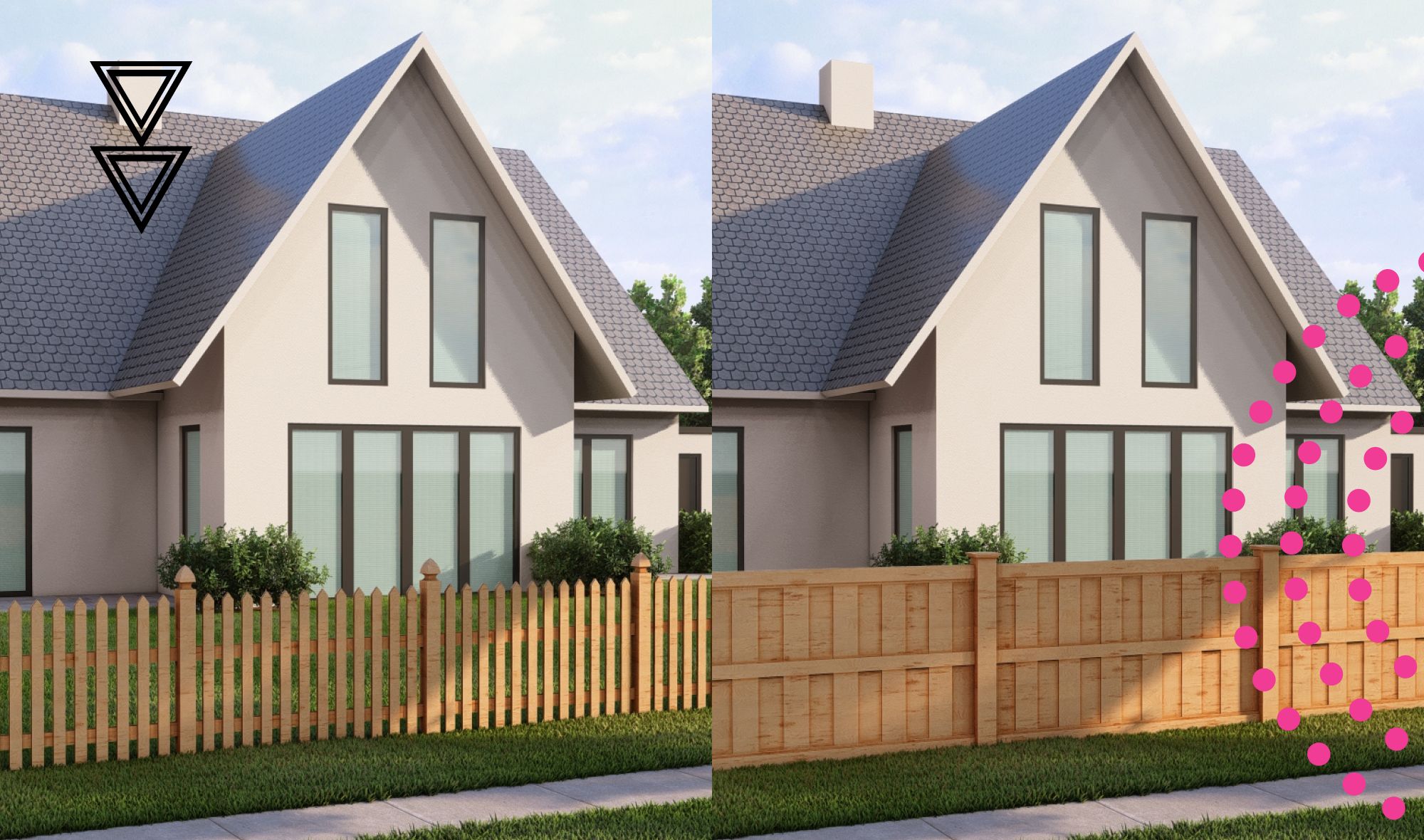
There's a wide range of wood fence styles, each offering unique aesthetic and functional benefits:
- Picket Fences: Known for their distinctive, evenly-spaced vertical boards, or "pickets," these fences are often used for decorative purposes, particularly in front yard settings. They provide a charming, traditional look that can boost your home's curb appeal.
- Privacy Fences: Privacy fences are usually taller, ranging from 6 to 8 feet, with boards arranged in a way that blocks views into your yard. They are often used in backyards to provide a private space for homeowners.
- Post and Rail Fences: Also known as split rail fences, these offer a rustic look that's perfect for large properties, farms, or any home that wants to create a country or traditional aesthetic.
- Board on Board Fences: This style features overlapping or offset boards to provide complete privacy. They have a similar appearance to picket fences but are designed to prevent any view through the fence.
The type of wood used can also affect the look and durability of the fence. Natural wood choices, like western red cedar and pressure treated pine, are common due to their resistance to rot and insects.
Advantages and disadvantages of wood fences

Wood fences have a number of advantages. They are often more affordable than other types of fences, such as wrought iron or vinyl, and can be easily painted or stained to match any color scheme. Wood fences also offer a natural, organic look that can blend seamlessly with the landscape and the architectural style of many homes.
However, wood fences also have some disadvantages. They require more maintenance than most other types of fences. To extend the life of a wood fence, it's necessary to regularly seal, paint, or stain it to protect it from weather elements. Over time, wood can warp, crack, or rot, which may require repairs or replacement.
Maintenance and durability of wood fences
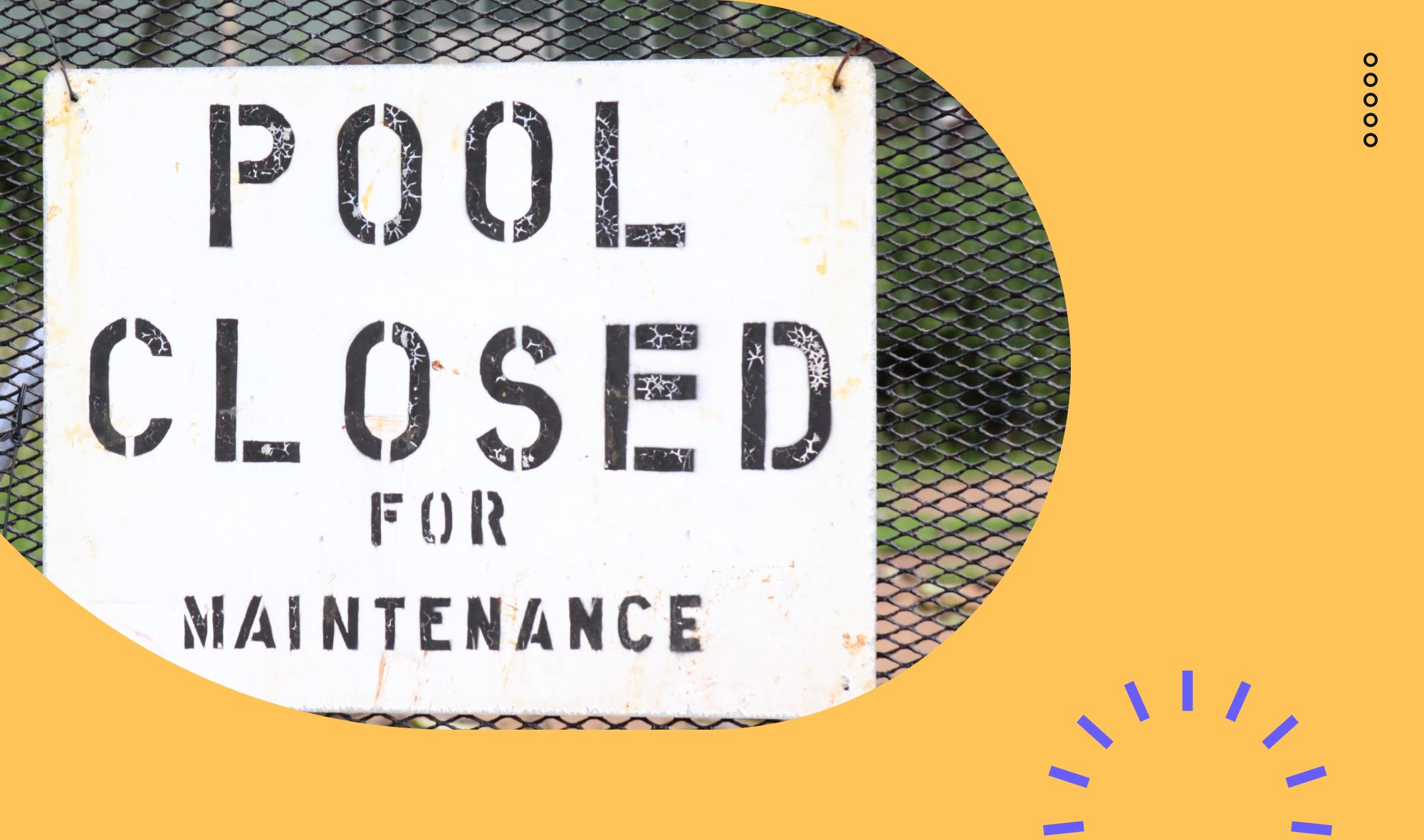
With proper maintenance, a wood fence can last for many years. This includes regularly applying a sealant or stain, which can protect the wood from moisture and reduce the risk of decay. It's also important to promptly repair any damaged areas to prevent further deterioration.
While maintenance can require some time and effort, many homeowners find the unique beauty and versatility of wood fences to be worth it. Whether you prefer a natural finish that highlights the wood's grain or a painted look that matches your home's color scheme, a wood fence can be a wonderful addition to your property.
The simplicity and utility of chain link fences

Chain link fences, with their simple design and utilitarian appeal, have long been a popular choice for residential fencing. Known for their affordability, durability, and ease of installation, chain link fences are a practical solution for many homeowners.
Why chain link fences are a popular choice

One of the most appealing aspects of chain link fences is their cost-effectiveness. Measured per linear foot, chain link fencing materials and installation tend to be less expensive than many other types of fences. This makes them a great option for homeowners who need to fence large properties or those who have budget constraints.
Chain link fences are also valued for their durability. Made from steel that's been coated with a protective layer to resist rust and corrosion, these fences can last for many years with little maintenance. Additionally, chain link fences are resistant to pests and rot, issues that can affect wood fences.
Another advantage of chain link fences is their transparency. The open weave of the fence allows homeowners to keep an eye on children or pets in the yard while also maintaining a view of the surrounding area.
Join our newsletter
Stay ahead of the curve in all things outdoor.
Get the inside scoop on the latest landscaping, lawn care, and fencing trends with 1 actionable tip every Saturday morning.
Pros and cons of chain link fences

While chain link fences have many advantages, there are a few factors to consider. The open design that allows for visibility also means that chain link fences offer less privacy than wood, vinyl, or composite fencing. However, if privacy is desired, it can be increased by weaving slats through the links or growing plants, such as climbing vines, along the fence.
Aesthetically, chain link fences have a more utilitarian look that may not complement all home styles. They're less likely to enhance curb appeal in the same way as a wood picket fence or a wrought iron fence might. However, options like color-coated chain link can help to improve the fence's appearance and allow it to blend better with the landscape.
Tips for enhancing the aesthetic appeal of chain link fences

Though chain link fences are often seen as purely functional, there are ways to make them more attractive. One method is to use colored chain link, available in shades like black, green, or brown, that can blend more seamlessly with your yard.
Another option is to use privacy slats. These are inserts that can be woven through the chain link, creating a solid wall that enhances privacy and gives the fence a unique look.
Finally, you can use plants to beautify a chain link fence. Climbing vines, flowering plants, or even hedge-style plantings in front of the fence can help to soften its appearance and create a more natural look.
In summary, chain link fences are a practical, affordable, and durable fencing option. With a few adjustments, they can also be made more visually appealing, making them a versatile choice for many homeowners.
The elegance of wrought iron: a classic type of fence

Synonymous with elegance and strength, wrought iron fences have been a favored choice among homeowners looking for a blend of aesthetics, durability, and security. From intricate, decorative fence designs to more simplistic and sleek styles, wrought iron fencing is a timeless choice that adds significant value and curb appeal to a property.
The allure and functionality of wrought iron fences

Wrought iron fences are revered for their aesthetic appeal. Their ability to be molded into intricate designs and patterns makes them a popular choice for homeowners looking to make a statement. Whether you opt for a design featuring ornate scrolls and curves or prefer a more minimalist approach, a wrought iron fence can be a stunning addition to your home.
But wrought iron fencing is more than just attractive. It's also one of the strongest fencing materials, capable of withstanding impacts that might damage a wood or vinyl fence. This durability, coupled with its imposing appearance, makes wrought iron fencing an excellent choice for security.
Another advantage of wrought iron is its longevity. With proper care, a wrought iron fence can last for many decades, surpassing the lifespan of most other types of fences.
Advantages and disadvantages of wrought iron fences

While wrought iron fences have many advantages, they also have some potential drawbacks to consider. One of the primary disadvantages is the cost. Wrought iron is typically more expensive per linear foot than other fencing materials, both in terms of the material itself and the cost of professional installation. This is due to the material's weight and the skill needed to install and shape it.
Another consideration is the maintenance required. Wrought iron fences need to be regularly inspected for signs of rust and may need to be repainted or re-coated every few years to prevent corrosion.
Despite these potential downsides, many homeowners find that the benefits of wrought iron fencing, from its strength and durability to its aesthetic appeal, make it a worthwhile investment.
Maintenance tips for wrought iron fences

Maintaining your wrought iron fence is crucial to preserve its beauty and prolong its life. Regular inspection for any signs of rust or damage is important. If you find rust, it should be promptly removed using a wire brush, then the area should be repainted to prevent further rusting.
Cleaning your wrought iron fence regularly can also help maintain its appearance. A gentle wash with warm, soapy water can remove dirt and grime, and a fresh coat of paint or rust-resistant finish can keep it looking its best.
In summary, while wrought iron fences require a larger initial investment and some ongoing care, their striking appearance, excellent security, and longevity can make them a valuable addition to your property.
Other different style fences: vinyl, bamboo, and composite

Beyond wood, chain link, and wrought iron, there are other types of fences that offer a range of benefits to homeowners. Among these are vinyl, bamboo, and composite fences, each bringing unique aesthetics and functionalities to your property.
Additional types of fences, their features, and benefits

- Vinyl Fences: If you're seeking a low maintenance alternative to a traditional wooden fence, consider vinyl fencing. Easy to clean and resistant to pests and rot, vinyl fences can mimic the look of a traditional picket fence or privacy fence without the need for regular painting or staining. While the initial cost of vinyl fencing can be higher than wood, its durability and low maintenance requirements often make it a cost-effective choice in the long run.
- Bamboo Fences: For a unique, eco-friendly fencing option, consider bamboo. Bamboo fencing offers a distinct, natural look that can create a tranquil, exotic atmosphere in your yard. Bamboo is a fast-growing, renewable resource, making it a more environmentally friendly option than many traditional fencing materials. However, keep in mind that bamboo can require some maintenance to prevent weathering and decay, especially in wet climates.
- Composite Fences: Composite fencing is made from a mixture of recycled plastic and wood fibers. It offers the look of natural wood without the maintenance, as it doesn't need to be stained or sealed. Composite fencing is also resistant to rot and pests. Like vinyl, the initial cost can be higher, but the durability and low maintenance of composite fencing can make it a smart investment over time.
Comparing these with other previously mentioned fences

When deciding on the right type of fence for your home, it's important to weigh the pros and cons of each option.
Vinyl and composite fences, for example, offer the appeal of low maintenance and the ability to mimic the look of natural wood. However, they can be more costly upfront than wood or chain link fences. On the other hand, while bamboo fences provide an eco-friendly, unique aesthetic, they may require more maintenance in certain climates.
Ultimately, your choice will depend on your budget, the desired aesthetic, your tolerance for maintenance, and your personal preference. From the classic look of a wooden picket fence to the strength and elegance of wrought iron, the versatility of vinyl, or the sustainability of bamboo, there's a type of residential fencing to suit every home and homeowner.
Eco-friendly fencing: a look at sustainable types of fencing

As environmental consciousness grows, many homeowners are seeking eco-friendly alternatives for their fencing needs. Sustainable types of fencing not only reduce your environmental impact but can also offer unique aesthetics to your property.
Eco-friendly fencing options
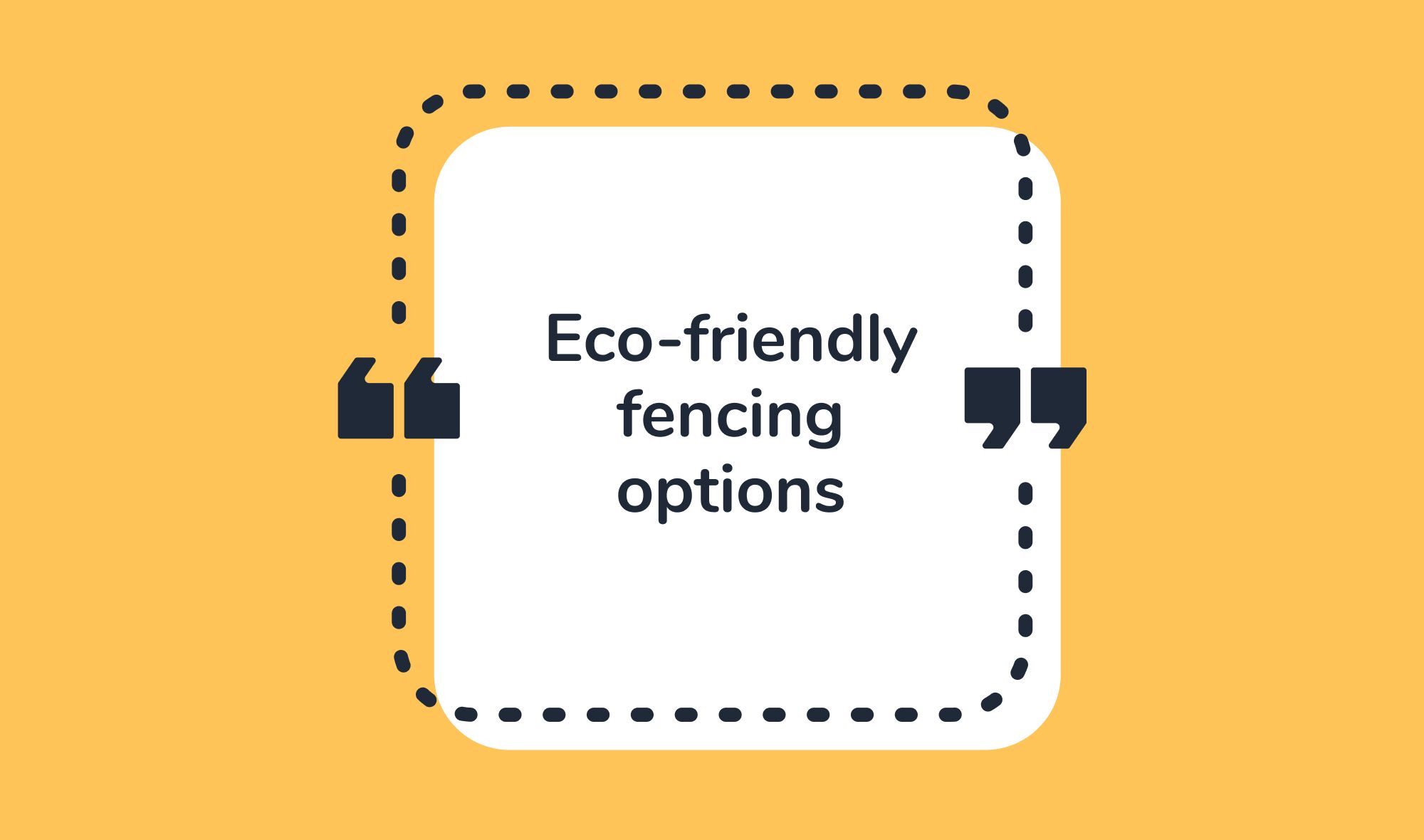
There are several types of fences that can be considered eco-friendly due to their material composition or the way they're produced.
Bamboo Fencing: As mentioned earlier, bamboo is a renewable resource that grows much faster than traditional types of wood used for fencing. A bamboo fence is a great option if you're seeking a natural, exotic look while minimizing your environmental footprint.
Composite Fencing: Composite fencing, made from a mix of recycled plastic and wood fibers, is another sustainable option. This type of fence offers the look of natural wood but lasts longer and requires less maintenance. Plus, it helps to reduce the amount of plastic and wood waste that ends up in landfills.
Recycled Metal Fencing: Fences made from recycled metal, such as aluminum or steel, are also an eco-friendly choice. These fences are durable, require little maintenance, and can be recycled again at the end of their life.
Living Fences: Another sustainable option is a living fence, made from shrubs, trees, or other plants. These fences can provide privacy and noise reduction, just like traditional fences, and have the added benefits of producing oxygen, providing habitat for wildlife, and creating a truly unique, natural aesthetic.
The benefits of choosing sustainable fencing solutions

Opting for sustainable fencing solutions offers a range of benefits, both environmental and practical. Eco-friendly fences are often made from durable, long-lasting materials that can withstand the elements and resist pests, reducing the need for replacements or repairs.
Additionally, choosing an eco-friendly fence can help conserve natural resources, reduce waste, and minimize the environmental impact of your home improvement projects. From a design perspective, many of these eco-friendly fencing options offer unique aesthetics that can enhance the natural beauty of your outdoor space.
Whether you choose a bamboo fence, a composite fence, or a living fence, you can take pride in knowing that your choice is contributing to a healthier planet.
Fence customization: adding personal touches to your fence

A fence serves many purposes: it defines property lines, provides privacy and security, and can significantly enhance your home's curb appeal. But beyond these practical functions, a fence also presents an opportunity for personal expression. Customizing your fence can make your property truly stand out and reflect your unique style.
How homeowners can customize fences to match their home style and personal preferences
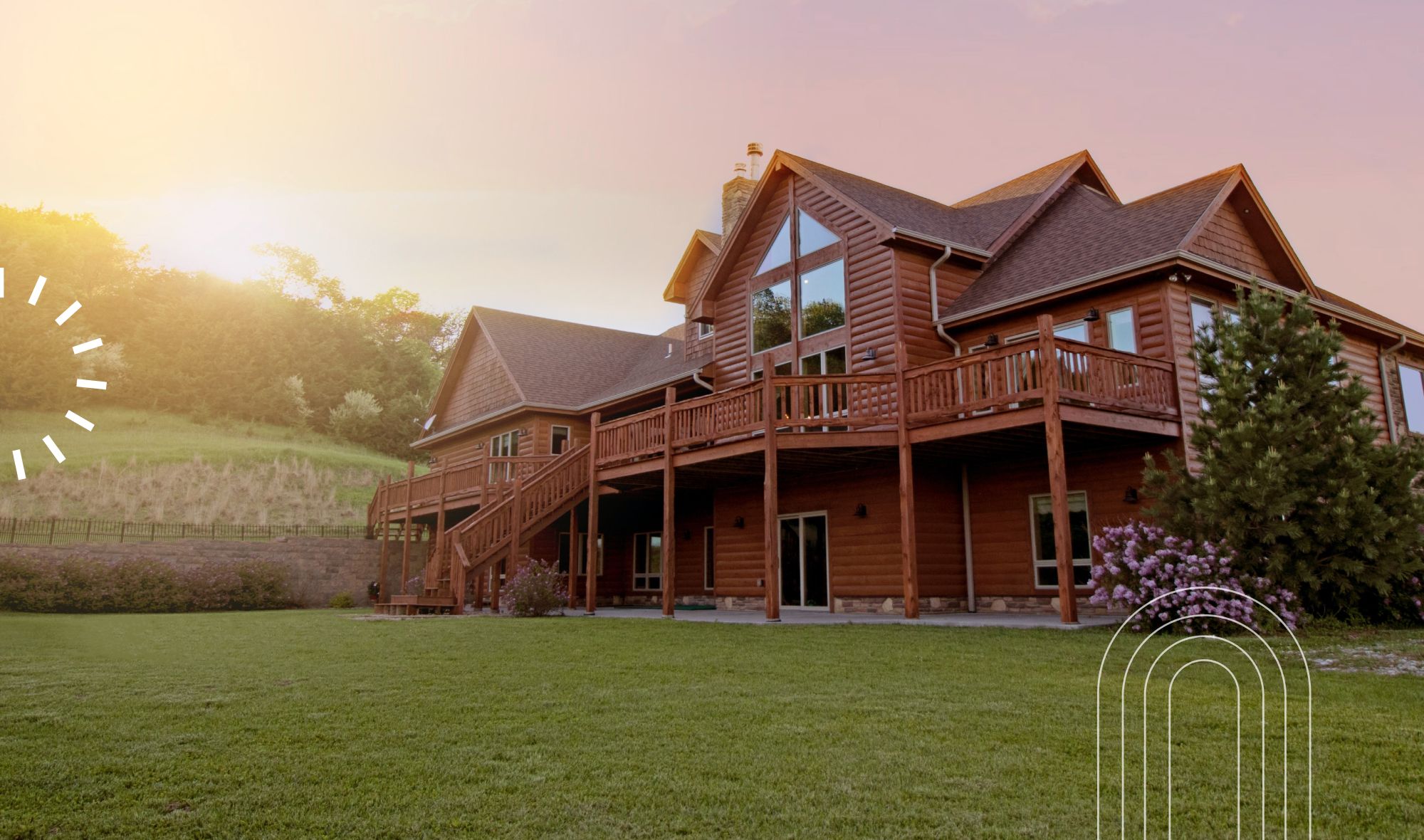
There are countless ways to customize your fence, and the best approach will depend on the type of fence and your personal tastes. Here are a few ideas:
- Color: Regardless of the fencing material, color is one of the easiest ways to customize your fence. From the natural wood tones of a cedar fence to the vibrant hues possible with vinyl or the rustic patina of weathered steel, the color of your fence can significantly impact your yard's overall aesthetic.
- Design Features: Design features can add a unique flair to your fence. For example, with a wood fence, you might choose a distinctive pattern for the top, like a lattice or dog ear design. For a wrought iron fence, you might opt for decorative scrolls or finials. Even a chain link fence can be customized with colored slats or by weaving in strips of fabric or vinyl for a pop of color.
- Post Caps: Custom post caps are another way to add a personal touch to your fence. These can be simple and sleek, ornately carved, or even fitted with solar lights for added functionality.
- Integrating Plant Life: For a truly natural look, consider integrating plant life into your fence. This can be as simple as planting flowers or shrubs along the base, training climbing vines to grow up a trellis or wire fence, or even opting for a living fence made entirely of plants.
Provide examples of customizations for different types of fences

To spark your imagination, let's explore a few specific examples:
- Wood Fences: For a traditional wooden fence, consider staining it a unique color or choosing a style with a decorative top. Add custom post caps or even install built-in planters or shelves to display potted plants or decorative items.
- Chain Link Fences: While chain link fences are often seen as utilitarian, they can also be customized. Consider adding colored privacy slats, or grow climbing plants like ivy or roses to add beauty and additional privacy.
- Wrought Iron Fences: With a wrought iron fence, the sky's the limit when it comes to custom designs. From intricate scrollwork to personalized emblems, a skilled metalworker can create a fence that's truly one of a kind.
- Vinyl Fences: Vinyl fences come in a wide variety of colors and styles. Choose a color that complements your home, and consider options like lattice tops, scalloped edges, or decorative post caps to add extra flair.
- Bamboo Fences: With a bamboo fence, consider adding a custom gate or integrating other elements, like wooden posts or a trellis top, to create a unique, mixed-material look.
In conclusion, your fence is more than just a boundary or a barrier – it's an extension of your home and an expression of your personal style. With a bit of creativity and customization, you can create a fence that not only serves its functional purposes but also adds a unique aesthetic appeal to your property.
Conclusion
Choosing the right fence for your residential property can be a significant decision. The type of fence you select can impact not only your home's curb appeal but also its value and functionality. From defining property lines and providing privacy to enhancing the aesthetic appeal of your yard, a fence serves various essential roles.
Throughout this exploration, we've delved into the diverse world of residential fences, from traditional wood fences to the simplicity of chain link, the timeless elegance of wrought iron, and the innovative types like vinyl, bamboo, and composite fences. We've seen how each type of fence brings unique benefits, as well as considerations such as cost, maintenance, and durability.
Furthermore, we have discovered the growing trend of eco-friendly fencing options that offer sustainability while still providing functionality and aesthetic appeal. And let's not forget the almost limitless possibilities for personalization, allowing your fence to become a true reflection of your style.
When it comes to selecting the right fence for your property, remember to consider your specific needs and preferences, from the level of privacy and security required to your budget and your willingness to undertake maintenance. The right fence for you is out there, waiting to transform your yard into a space that is as secure, private, and aesthetically pleasing as you desire.
Whether you're installing a new fence for the first time or replacing an old one, remember that your fence is more than just a boundary. It's an opportunity to enhance your home, express your personal style, and create a space where you and your family can enjoy the outdoors in comfort and safety.
We hope this exploration into the different types of fences has provided you with valuable insights to help make an informed decision. Remember, the choice of fence can either make or break the aesthetic appeal and functionality of your home. So, choose wisely, and your residential property will thank you. Happy fencing!
Join our newsletter
Stay ahead of the curve in all things outdoor.
Get the inside scoop on the latest landscaping, lawn care, and fencing trends with 1 actionable tip every Saturday morning.